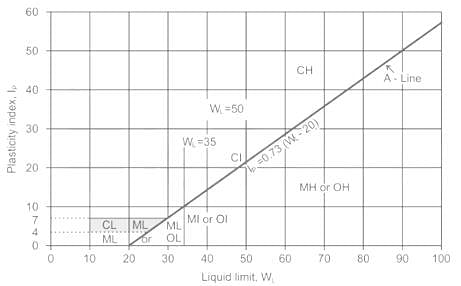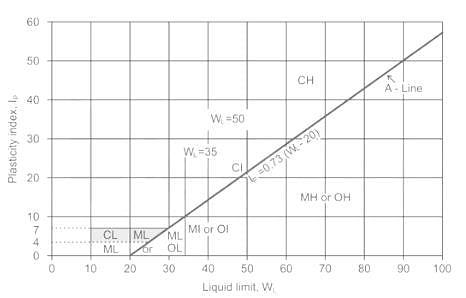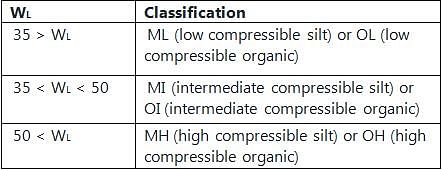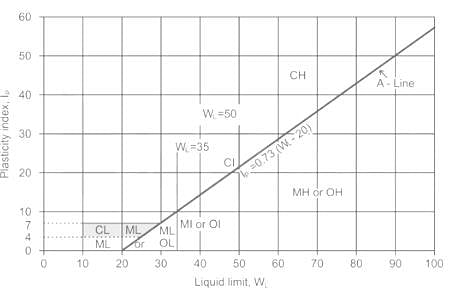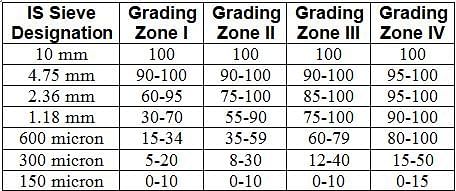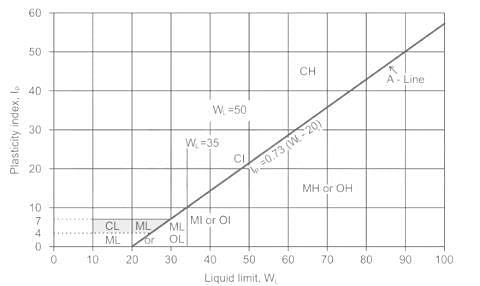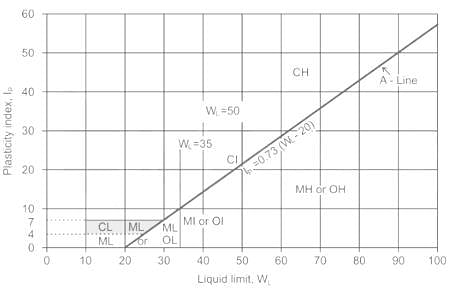Test: Classification of Soils - Civil Engineering (CE) MCQ
10 Questions MCQ Test Soil Mechanics - Test: Classification of Soils
The soil was tested in a National research center and its liquid limit was found to be 15% and the plasticity index was found to be 3%. According to Cassagrande's plasticity chart, which soil type is this?
Hazen proposed which of the following equations to determine whether a soil sample Is uniformly graded or well graded? (Here Cu = Uniformity Coefficient. and D = Diameter of the soil particle)
(Symbols and notations carry their usual meaning)
(Symbols and notations carry their usual meaning)
The standard plasticity chart to classify fine grained soils is shown in the figure below.
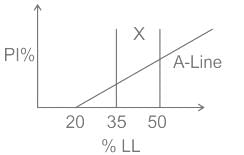
What does the area marked 'X' represent?

What does the area marked 'X' represent?
A fine grained soil has liquid limit of 60 and plastic limit of 20 as per plasticity chart. According to IS classification, the soil is represented by which of the following letter symbols?
Soils deposits formed by wind transport wind are called:
As per IS 383, sand can be graded into _______ zones.
A fine grained soil has liquid limit of 60 and plastic limit of 20. As per the plasticity chart, according to IS classification, the soil is represented by the letter symbols
The soil which is formed by transportation of the weathered rock material by the wind is
The soils which plot above the A line in a plasticity chart are known as:
|
30 videos|77 docs|74 tests
|


